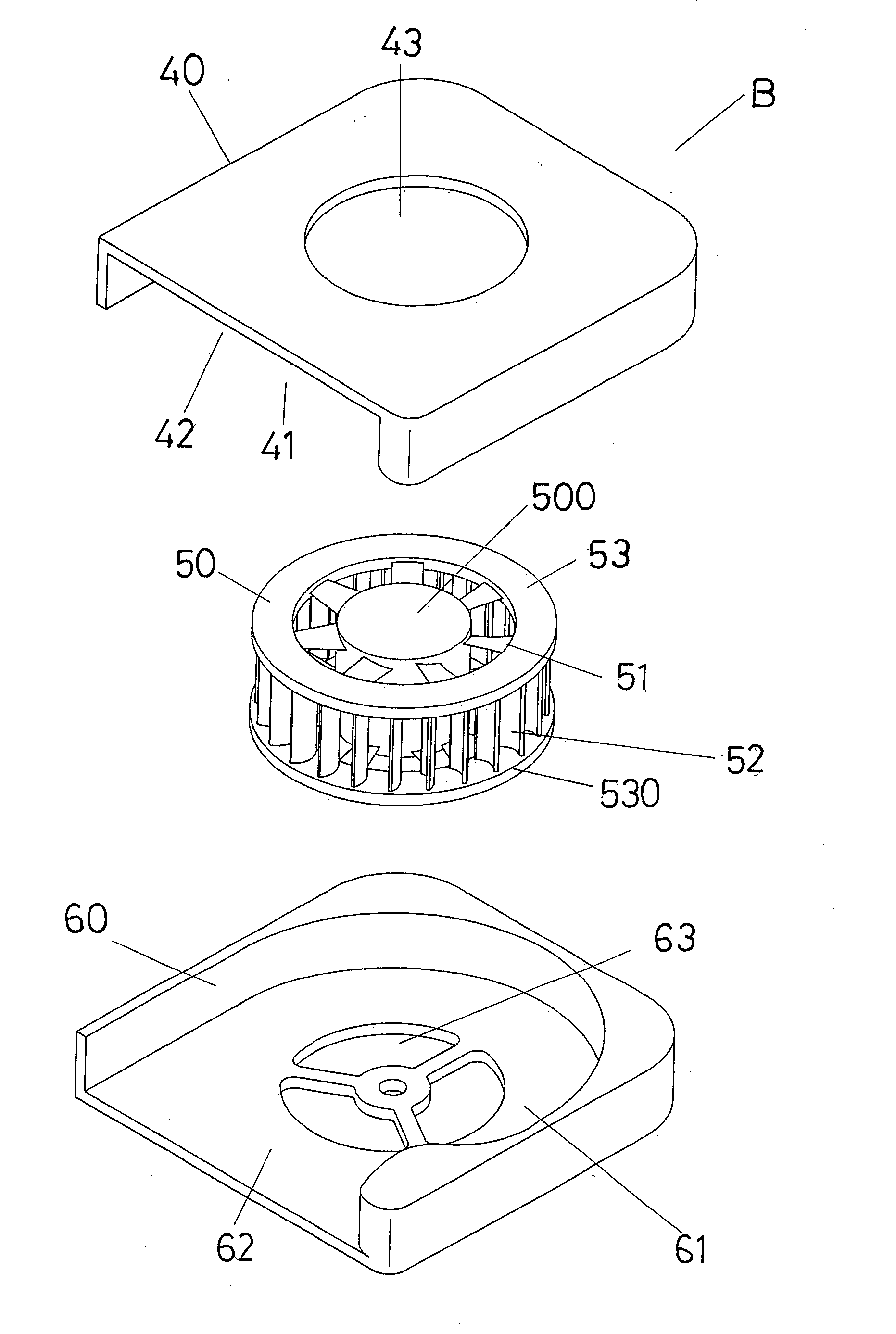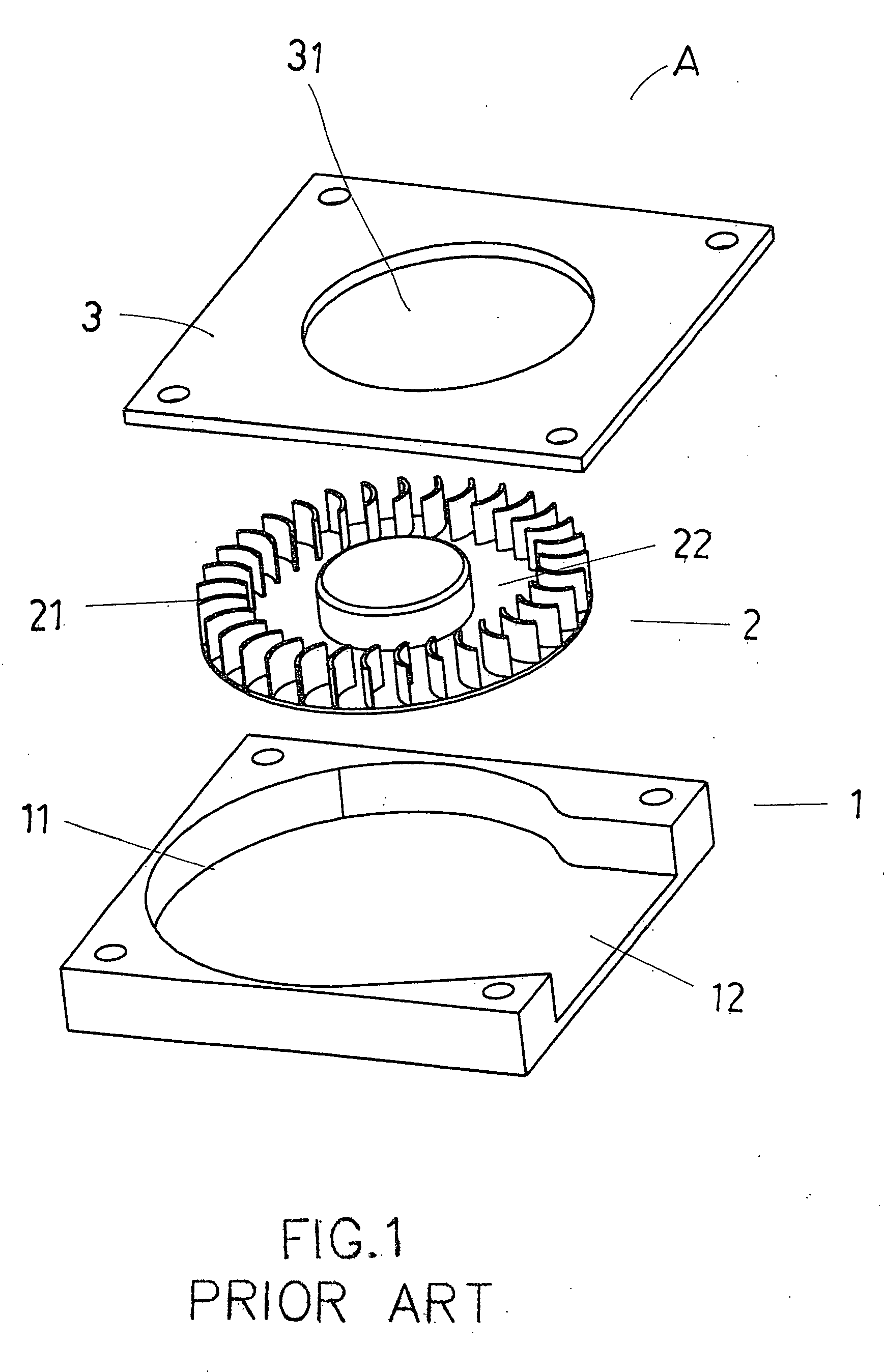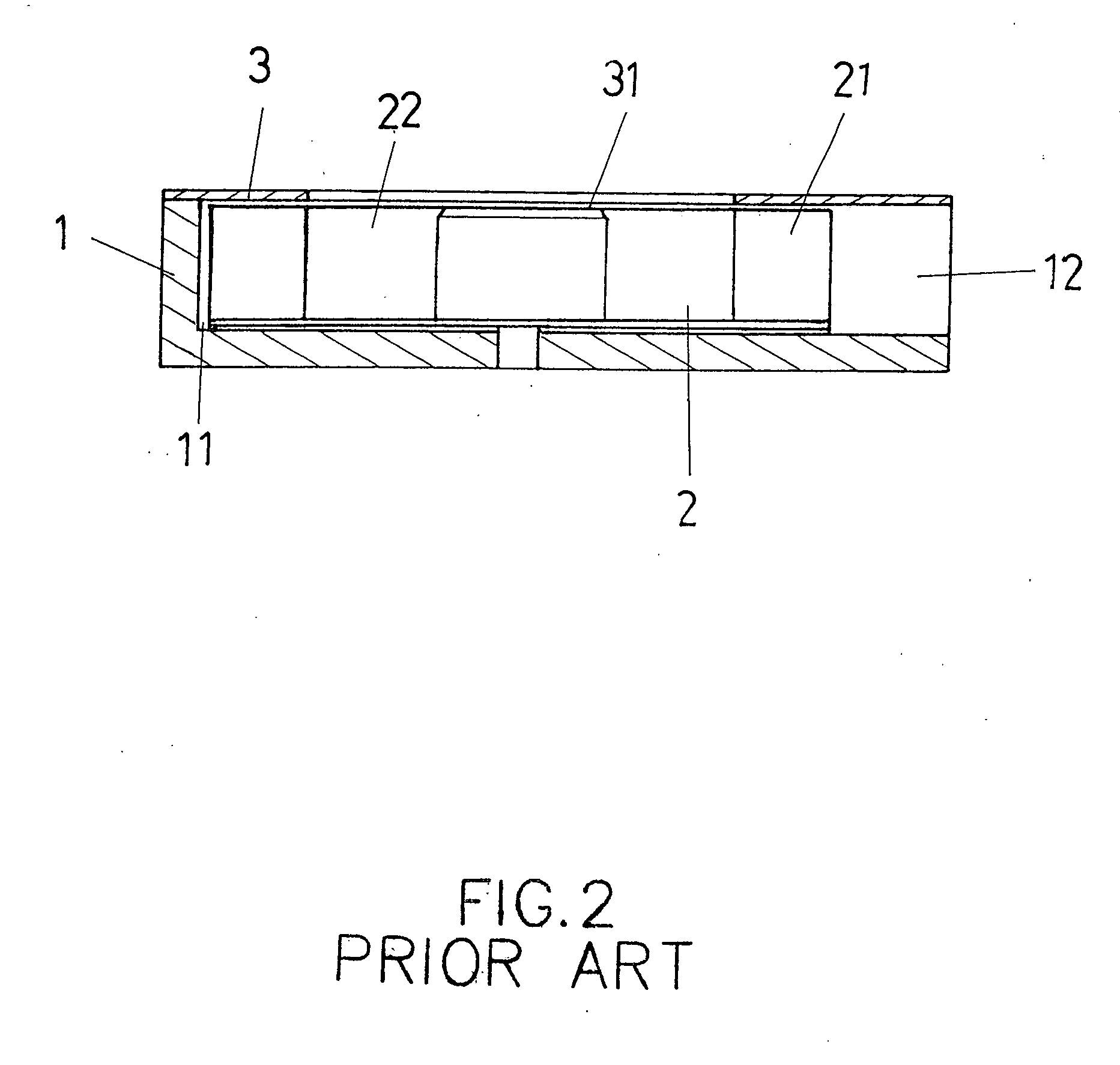High volume fan device for removing heat from heat sources
- Summary
- Abstract
- Description
- Claims
- Application Information
AI Technical Summary
Benefits of technology
Problems solved by technology
Method used
Image
Examples
Embodiment Construction
[0012] Referring to FIGS. 3 and 4, the fan device “B” of the present invention comprises a base 60 having a recess 61 defined in a first side thereof and three holes 63 are defined through a second side of the base 60. A first outlet 62 is defined in an end of the base 60.
[0013] A fan unit 50 is received in the recess 61 and includes a first ring 53 and a second ring 530 which is co-axially located at a distance from the first ring 53. A motor 500 is located at a center of the first and second rings 53, 530. A plurality of curve inner blades 51 extend from an inner periphery of the first ring 53 and are connected to the motor 500. A plurality of outer blades 52 extend from an underside of the first ring 53 and distal ends of the outer blades 52 are connected to the second ring 530.
[0014] A cover 40 has a recess 41 defined in an underside thereof and a hole 43 is defined through the cover 40. The cover 40 is connected to the base 60 and the fan unit 50 is located within the hole 43...
PUM
 Login to View More
Login to View More Abstract
Description
Claims
Application Information
 Login to View More
Login to View More - R&D
- Intellectual Property
- Life Sciences
- Materials
- Tech Scout
- Unparalleled Data Quality
- Higher Quality Content
- 60% Fewer Hallucinations
Browse by: Latest US Patents, China's latest patents, Technical Efficacy Thesaurus, Application Domain, Technology Topic, Popular Technical Reports.
© 2025 PatSnap. All rights reserved.Legal|Privacy policy|Modern Slavery Act Transparency Statement|Sitemap|About US| Contact US: help@patsnap.com



